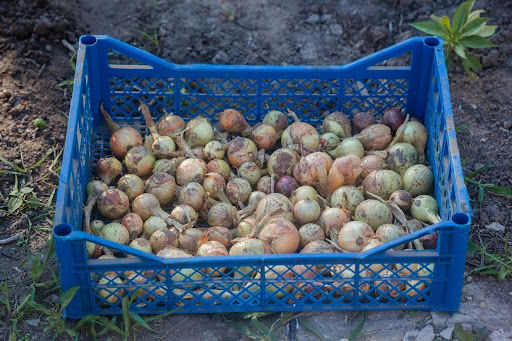E.coli and Apples: How Crop Characteristics Determine How E.coli Can Infiltrate and Adhere to Produce
- Allissa Conley

- Sep 8
- 3 min read
This month we dive into more scientific research that demonstrates the relationship between pathogen survival and crop characteristics, with a focus on apples. Remember that one requirement of the Pre-Harvest Agriculture Water Assessment is that farmers are required to identify crop characteristics of the covered commodities that they grow in order to help determine how prone they are to things like surface adhesion or internalization of hazards.
Apples come in many colors and textures depending on the variety and ripeness. They have a natural wax layer of protection, but this doesn’t mean that they are immune from hazards. Bruises, cuts, and pest damage can still occur, making the perfect pathways for pathogens to enter and adhere to the apples. If someone sick is handling produce, this is also a way for apples to get introduced to pathogens. North Bay Produce compiled a great wealth of scientific articles that dive into how pathogens, especially E. coli, can interact with apples. These articles can be used by farmers when completing the crop characteristic portion of their pre-harvest agricultural water assessments.
Article list:
Apples
§ Effect of Surface Roughness on Retention and Removal of Escherichia coli O157:H7 on Surfaces of Selected Fruits
Key takeaway: Golden Delicious apples, navel oranges, avocadoes, and cantaloupes were studied on the retention of E. coli on the crop’s surface. Results indicated that there was a positive relationship between crops with more E. coli surface adhesion and sanitizers acting less effective. Also, there was an increase in bacteria retention on surfaces that were rougher in texture.
§ Influence of Punctures, Cuts, and Surface Morphologies of Golden Delicious Apples on Penetration and Growth of Escherichia coli O157:H7
Key takeaway: An E. coli strain was injected into various parts of the apple including the calyx, as well as fresh cuts and old cuts. 48 hours after injection, E. coli cells penetrated up to 5.5mm in new cuts but did not penetrate old cuts. E. coli population growth occurred 4-8 hours after injection into fresh cuts with populations increasing by 3-log (1,000) after 48 hours. E. coli penetrated calyces, but was never recovered from the inner core of apples.
Key takeaway: Red Delicious had the greatest amount of internalization in the outer core-stem and blossom ends. Golden Delicious had the highest rate of internalization in the skin and the flesh. York apple sections were lowest among all cultivars. Flesh and core sections of all cultivars of treated apples revealed the presence of E. coli in extracellular spaces. Bacteria was highly clustered in areas of flesh that had been bruised and punctured, and were more evenly distributed throughout the flesh of uninjured apples.
§ Attachment of Escherichia coli O157:H7 to the Surfaces and Internal Structures of Apples as Detected by Confocal Scanning Laser Microscopy
Key takeaway: Infiltration through the floral tube and attachment to seeds and internal trichomes were observed in all apples examined, regardless of temperature differential during inoculation. The pressure differential had no effect on infiltration or attachment of E. coli. Puncture wounds harbored greater numbers of pathogens at greater depths than did other sites examined. Results suggest that E. coli attached to internal core structures or within tissues of apples may evade decontamination treatments.
---
Article by Allissa Conley, Produce Safety Technician



